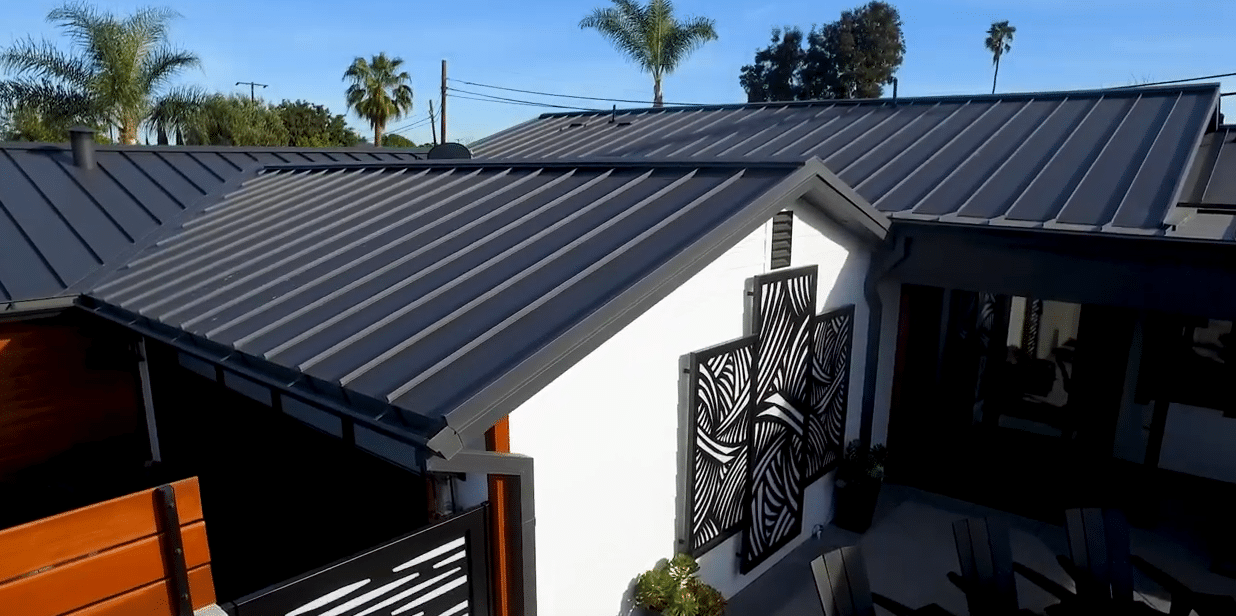Metal roofs are manufactured through a process that transforms raw metal materials into roofing panels or shingles.
1. Why Choose Metal Roofing?
Metal roofing is chosen for a variety of reasons, including its durability, energy efficiency, and low maintenance requirements. Homeowners and builders often select metal roofing because it offers long-term cost savings, a modern appearance, and excellent weather resistance. Metal roofing is also eco-friendly, as it is often made from recycled materials and can be recycled at the end of its life cycle.
2. What Are the Advantages of a Metal Roof?
Durability and Longevity: Metal roofs can last 40 to 70 years, far exceeding the lifespan of traditional asphalt shingles.
Energy Efficiency: Metal roofing reflects solar heat, reducing cooling costs in hot climates. Some metal roofs also come with specialized coatings that enhance energy efficiency.
Weather Resistance: Metal roofs are highly resistant to wind, rain, snow, and hail. They also perform well in extreme temperatures and climates.
Fire Resistance: Metal roofing is non-combustible and provides excellent fire resistance.
Low Maintenance: Metal roofs require minimal maintenance compared to other roofing materials, as they are less prone to damage and do not degrade quickly.
Sustainability: Many metal roofs are made from recycled materials and can be recycled again at the end of their lifespan.
Aesthetic Variety: Metal roofing comes in a wide range of styles, colors, and finishes, offering homeowners flexibility in design.
3. What Are Metal Roofs Made Of?
Steel: The most common material for metal roofs, typically galvanized (coated with zinc) or galvalume (coated with aluminum and zinc) for corrosion resistance.
Aluminum: Lightweight, corrosion-resistant, and often used in coastal environments.
Copper: A premium option known for its beauty and patina, copper is highly durable but expensive.
Zinc: Another high-end material, zinc is known for its natural patina and longevity.
Tin: Rarely used today in its pure form, tin roofs are often referred to generically but may actually be made of steel with a tin coating or similar materials.
4. What Does the Metal Roof Manufacturing Process Look Like?
- Raw Material Procurement: The process starts with large rolls or sheets of metal, which may be pre-treated or coated with protective finishes, depending on the material.
- Roll Forming or Stamping:
- Roll Forming: For continuous metal panels like standing seam or corrugated metal roofing, the metal is fed through a roll-forming machine where it passes through a series of rollers. These rollers bend and shape the metal into the desired profile. Roll forming is typically used for creating longer panels that are installed vertically.
- Stamping: For stamped metal shingles or tiles, large flat metal sheets are pressed into molds or dies using a stamping machine to create the texture and shape of traditional roofing materials (e.g., clay tiles or wood shakes).
- Coating Process: Many metal roofing systems undergo a coating process after forming. For steel, this often includes galvanization to prevent rust, followed by a painted finish. Other metals, like aluminum, may receive a baked-on powder coating or be pre-painted with weather-resistant finishes.
- Cutting to Size: Once the metal is shaped and coated, it is cut to the required dimensions, often customized for specific roof sizes. This ensures a precise fit during installation.
- Finishing Details: Additional processes may include applying seams, fastening elements, or specialized edge details to improve waterproofing and ease of installation. Panels or shingles may also be formed with interlocking mechanisms to enhance their performance.
- Quality Control: Each panel or shingle undergoes quality inspections to ensure it meets durability, strength, and coating thickness standards.
- Packaging: The finished metal roofing materials are then packaged and prepared for shipping, ensuring they arrive safely to job sites without damage.

